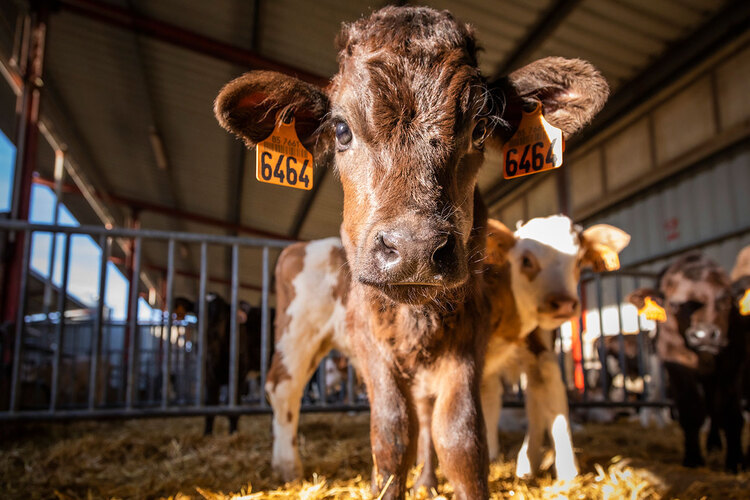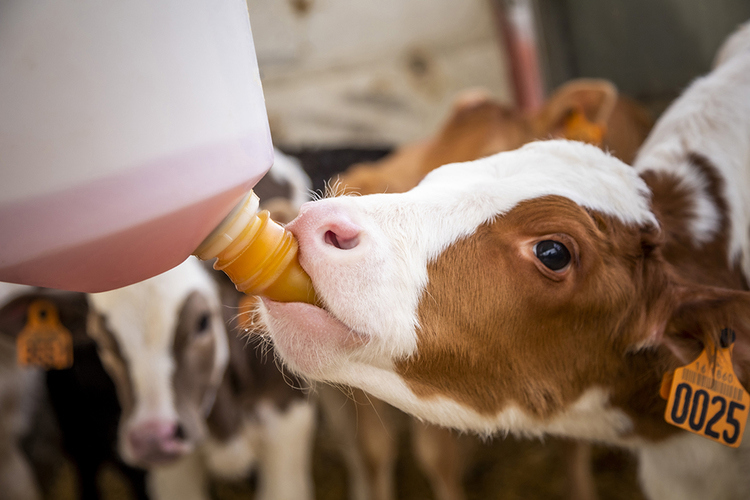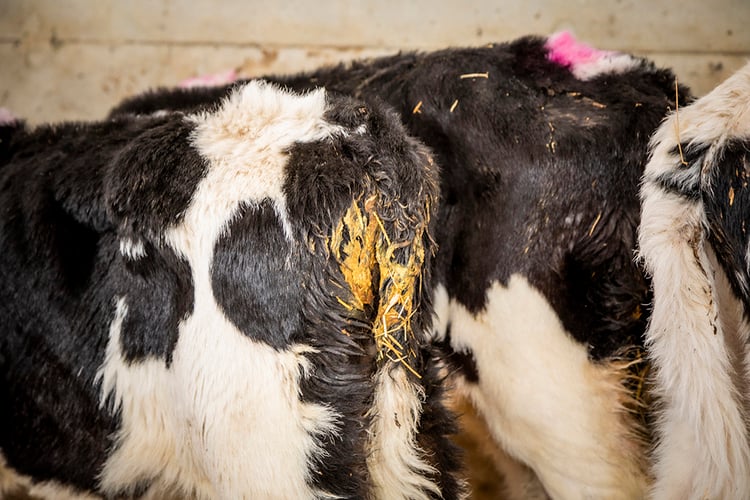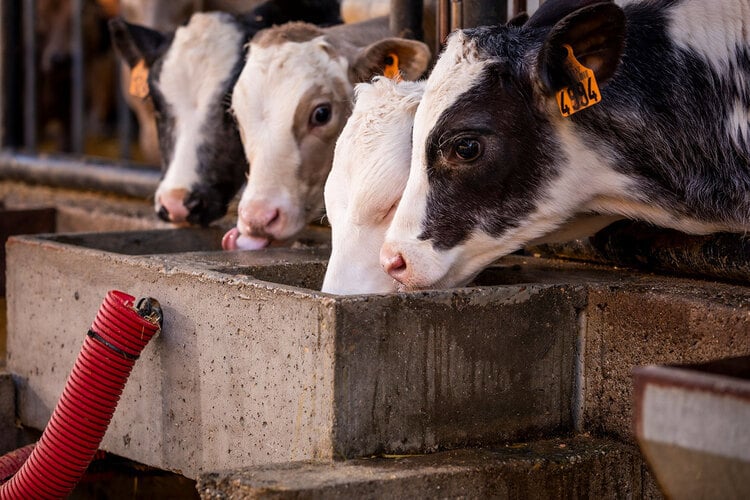
Key takeaways from the research
- Tonicity and sodium levels of oral electrolyte solutions can vary significantly
- Compared to a hypertonic oral electrolyte solution, a hypotonic oral electrolyte solution is more suitable to correct the acid-base balance of calves with diarrhoea
- Faecal water and sodium losses in calves treated with the hypotonic OES are lower compared to the losses in calves treated with the hypertonic OES

A hypotonic OES corrects base excess and lowers faecal water and sodium losses better than a hypertonic OES.
Neonatal calf diarrhoea is the number one cause of neonatal calf mortality. Treatment with oral electrolyte solutions for calves to correct dehydration and metabolic acidosis associated with calf diarrhoea can be life-saving. Many of the oral electrolyte solutions (OES) commonly used in calves to treat dehydration as a result of calf scours do however have an osmolality that is too high[1]. The osmolality of an OES has been shown to have an effect on the ability to correct metabolic acidosis. A hypotonic OES had a stronger alkalizing effect in calves compared to an isotonic or hypertonic OES[2,3]. The work in calves with naturally occurring diarrhoea by Willms and others, presented in this article, suggests that a hypotonic OES has a more beneficial effect on acid-base balance and faecal water and sodium loss when compared to a hypertonic OES.
Materials and methods
Dairy calves suffering from naturally occurring diarrhoea (42 ± 3 kg and 20 ± 7 d of age) were selected according to metabolic acidosis severity and allocated to blocks of three animals, based on blood base excess (BE). Within blocks, calves were randomly assigned to one of three treatments:
- Hypertonic OES (Na+ = 110 mmol/L; 370 mOsm/kg; SID = 59 mEq/L; n = 15)
- Hypotonic OES with low Na+ (Na+ = 77 mmol/L; 278 mOsm/kg; SID = 71 mEq/L)
- Controls receiving warm water including 5 g/L of whey powder (n = 15)
Calves included in the study were fed 2.5 L of calf milk replacer twice daily at 06.30 and 17.00 h and had ad libitum access to water except during treatment administration. Calves were treated with the oral electrolyte solution for a period of 3 days. They were offered 2 litres of the OES treatment at 13.00 and 21.00 h and were allowed to consume the solutions for 3 hours. Intakes were recorded daily and blood samples were taken once daily at 11.00 h, starting one day after arrival, for a duration of 5 days. Urine and faeces were quantitatively collected on day 1 and day 2.
Results
Milk intakes (4 L/d) did not differ between treatment groups, while treatment and water intakes were higher in both groups fed an oral electrolyte solution (2.6 L/day and 1.3 L/day, respectively) than in control calves (1.6 L/d and 0.7 L/d; P < 0.05). As a result, total fluid intake per unit of BW was higher in calves fed one of the 2 OES formulations (174 g/kg BW/d) compared with control calves (147 g/kg BW/d; P = 0.02).
Total daily intake of sodium was higher for the calves treated with the hypertonic OES (241 mg/kg BW/d) than in the other groups and higher for the calves treated with the hypotonic OES (162 mg/kg BW/d) compared to the controls (72 mg/kg BW/d; P < 0.0001). Blood pH, BE, and HCO3- were higher in calves treated with the hypotonic OES than in the controls (P < 0.05), while the values in the calves treated with the hypertonic OES did not significantly differ from the other treatment groups.
Fecal water and sodium losses were lower in the calves treated with the hypotonic OES (24 g/kg BW/d and 20 mg/kg BW/d, respectively) compared to those treated with the hypertonic OES (60 g/kg BW/d and 49 mg/kg BW/d; P = 0.05), while the control group did not significantly differ with both OES groups (27 mL/kg BW/d and 28 mg/kg BW/d). The daily sodium balance was higher in both OES groups (72 mg/kg BW/d) compared to the control calves in which it was 0 mg/kg BW/d (P < 0.0001).
Conclusion
The calves suffering from diarrhoea included in this study were not able to absorb high sodium loads. This resulted in greater faecal water and sodium losses. Furthermore, only the hypotonic oral electrolyte solution with the lower sodium level was able to improve the acid-base balance in dairy calves suffering from neonatal scours.
References
[1] Wilms, J, Leal, L. and J. Martín-Tereso, Hypernatremia in diarrheic calves fed electrolytes mixed with milk replacer without access to water, 2019, Oral presentation at the ICPD congress.
[2] Wilms, J, Engelking, L, Leal, L, Doelman, J and J. Martín-Tereso, 2018, Tonicity of oral electrolyte solutions, ADSA Discover Conference, Chicago.
[3] Wilms, J, Echeverry-Munera, J,Leal, L.N and J. Martín-Tereso, 2019, Smart Calf conference Guelph.






